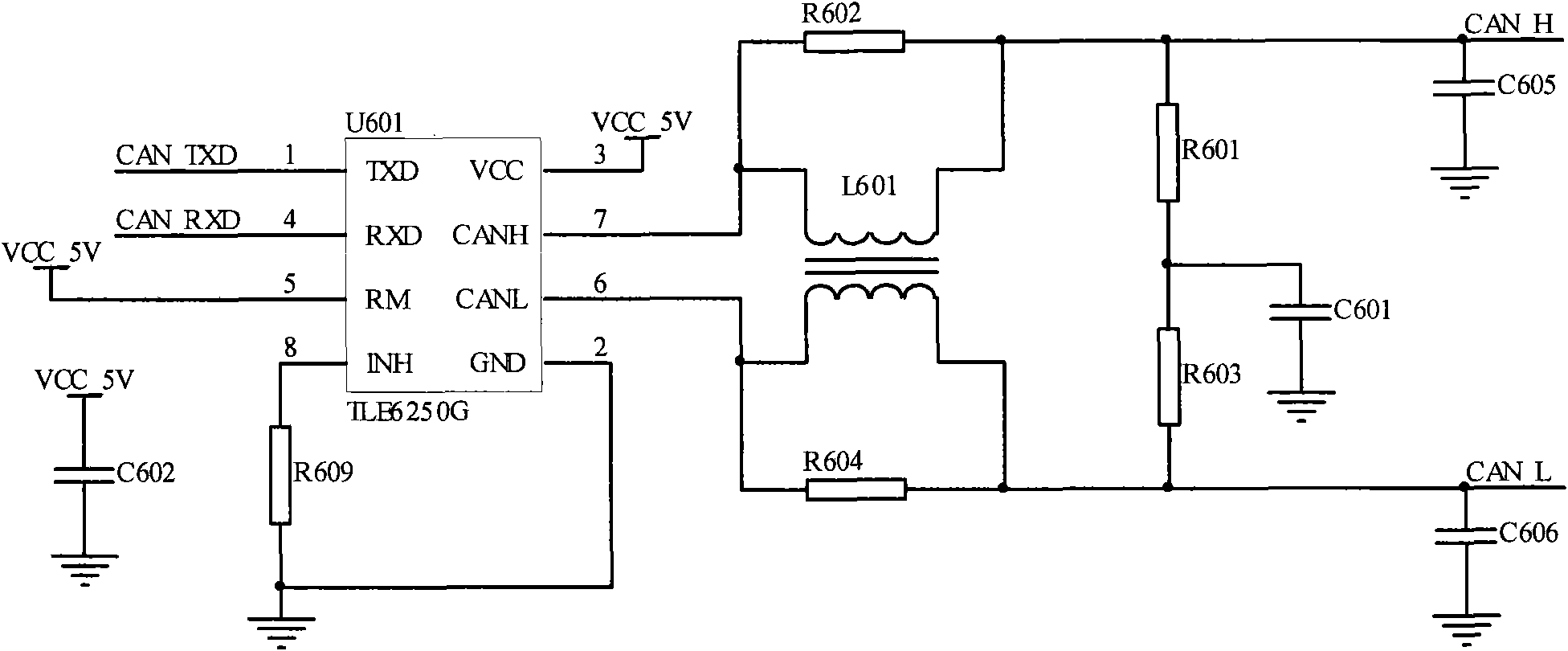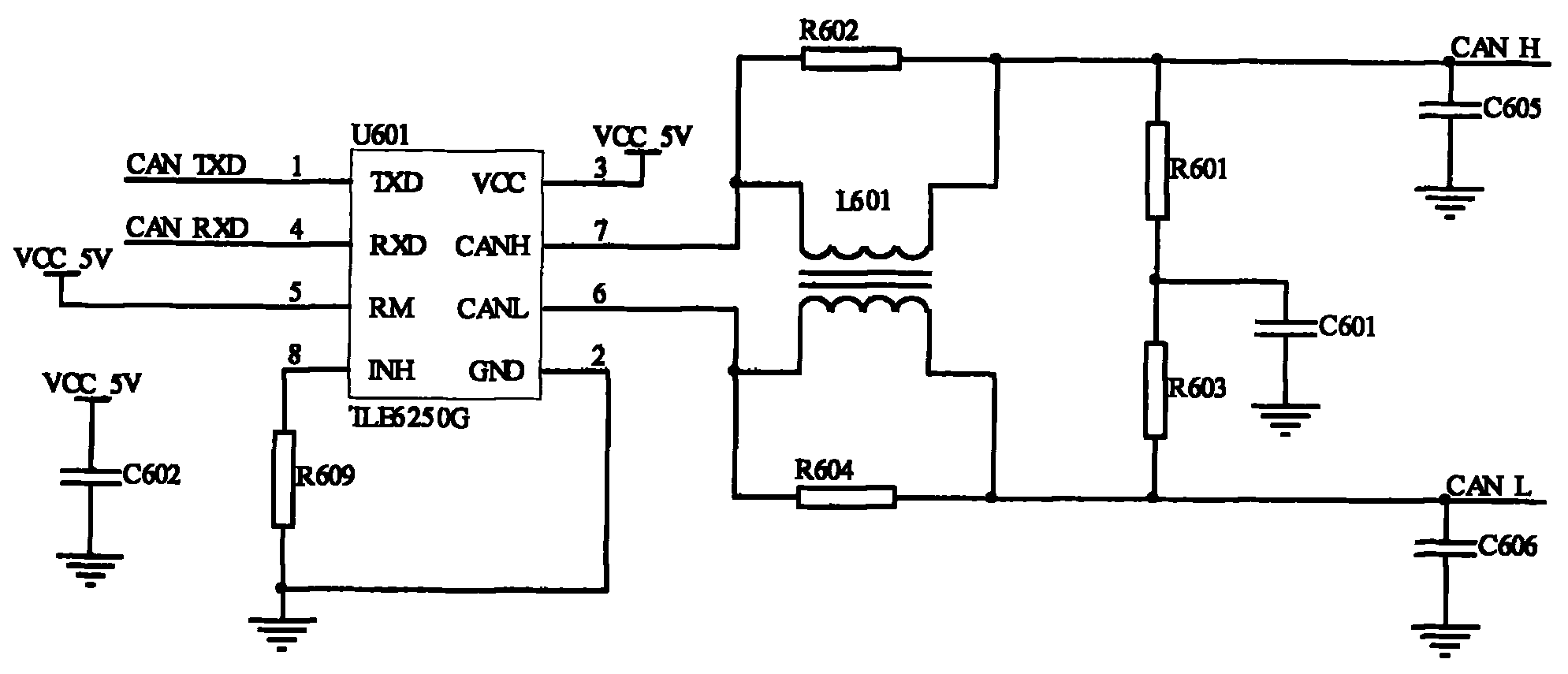Controller area network (CAN) bus-based anti-electromagnetic interference method and device
A CAN bus, anti-electromagnetic interference technology, applied in the field of pure electric vehicle bus, can solve the problem of no obvious effect and can not completely solve the electromagnetic interference of CAN bus
- Summary
- Abstract
- Description
- Claims
- Application Information
AI Technical Summary
Problems solved by technology
Method used
Image
Examples
Embodiment
[0020] Such as figure 1 , 2 As shown, the CAN_H and CAN_L signals on the CAN bus are used for data communication and command transmission between the CAN transceiver and the microcontroller. The CAN signal transmission rate has a great influence on the power and safety of the vehicle system. To ensure the CAN To ensure the reliability of communication, a CAN transceiver circuit with anti-electromagnetic interference is designed.
[0021] The technical solution diagram of the present invention is detailed in figure 2 . figure 2 Among them, TLE6250G is a CAN transceiver chip of Infineon Corporation, powered by 5V voltage, and supports a transmission rate of up to 1Mbps. The CAN bus signal transmits information between the TLE6250G and the microcontroller; TLE6250G is a CAN transceiver designed for the automotive environment. Its working range is very wide: -40~150℃; in addition to its general function as a CAN transceiver, it also has good anti-transient, anti-radio frequen...
PUM
 Login to View More
Login to View More Abstract
Description
Claims
Application Information
 Login to View More
Login to View More - R&D
- Intellectual Property
- Life Sciences
- Materials
- Tech Scout
- Unparalleled Data Quality
- Higher Quality Content
- 60% Fewer Hallucinations
Browse by: Latest US Patents, China's latest patents, Technical Efficacy Thesaurus, Application Domain, Technology Topic, Popular Technical Reports.
© 2025 PatSnap. All rights reserved.Legal|Privacy policy|Modern Slavery Act Transparency Statement|Sitemap|About US| Contact US: help@patsnap.com



